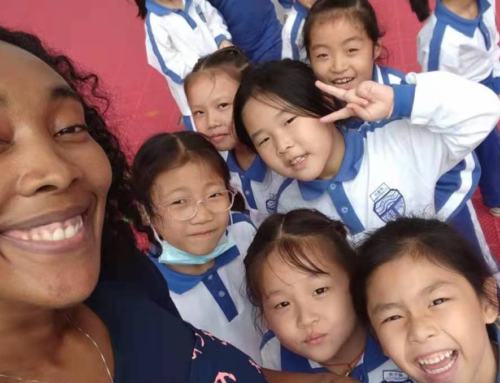Young Learners
 The youngest children to enter an ESL class can be as young as three years old. I remember my first small star class at EF: I was faced with the difficult task in managing and teaching ten young children. While I love children, managing a group of students who don’t speak your language is no easy task, and amounts to lots of running around and general chaos. It takes practice and confidence on the part of the teacher before the class responds to instructions in English. The best way to manage the class is to create a set of routines and simple instructions that they can become familiar with. I have also found that using body language beside instructions, lots of repetition, and establishing a point system on the IWB, helps with managing the class and having the students listen to you. Rewarding them through check marks, praise, and a high five for speaking English and listening to the teacher can go a long way. When you have your routines down and a bunch of fun activities that the children know and love, these classes can be the most fun to teach.
The youngest children to enter an ESL class can be as young as three years old. I remember my first small star class at EF: I was faced with the difficult task in managing and teaching ten young children. While I love children, managing a group of students who don’t speak your language is no easy task, and amounts to lots of running around and general chaos. It takes practice and confidence on the part of the teacher before the class responds to instructions in English. The best way to manage the class is to create a set of routines and simple instructions that they can become familiar with. I have also found that using body language beside instructions, lots of repetition, and establishing a point system on the IWB, helps with managing the class and having the students listen to you. Rewarding them through check marks, praise, and a high five for speaking English and listening to the teacher can go a long way. When you have your routines down and a bunch of fun activities that the children know and love, these classes can be the most fun to teach.
Teenagers
 I’ll be honest. Once a student reaches the age of 10, they are no longer the happy, energetic child who gets excited over flashcard games. While some of them might have some real motivation to learn English, I’ve found that most aren’t so dedicated in their studies, and English class is just one more class in a long list of lessons that they attend. As a result, many will be in a class at a certain level without having completed the required amount of hours needed in order to study at that level, putting many students at a much lower level than the book they are studying at. This means that you will be teaching material that is above the level of your students, and you will have to find ways to present that material and organize activities in ways that engages the class.
I’ll be honest. Once a student reaches the age of 10, they are no longer the happy, energetic child who gets excited over flashcard games. While some of them might have some real motivation to learn English, I’ve found that most aren’t so dedicated in their studies, and English class is just one more class in a long list of lessons that they attend. As a result, many will be in a class at a certain level without having completed the required amount of hours needed in order to study at that level, putting many students at a much lower level than the book they are studying at. This means that you will be teaching material that is above the level of your students, and you will have to find ways to present that material and organize activities in ways that engages the class.
The goal in every class should be to maximize student-speaking time while minimizing the time the teacher talks. Similar to the small star classes though, classroom management can also be a big issue, especially in a large class of 15 where boys outnumber girls. The point system can work here too, but at this age students can tell that they really don’t mean anything, so you need to come up with other ways of discipline, such as assigning more homework or threatening to call home. Activities greatly differ here too. Rather than drilling and practicing new language with flashcards, teenagers need to be given a task that requires them to learn new language through their own pre-existing knowledge. Drawing games, cut and paste activities, and short dialogues are some ideas. Teenagers like to feel that they are in control, so it is your job to find as many ways as possible to transfer the power to them without letting them taking control of you.
Adult Classes
 I recently just moved to a more established school in Jiaxing that offers classes of all age groups and levels. My past experience in Shaoxing didn’t present me with the opportunity to teach adult classes, with the exception of a couple teenage VIPs. My experience then with adult classes are still fairly new, but it is clear from what I have taught that these students want to learn. They are here for themselves without being told to do so by their parents. Classroom management is never an issue, and while you can present some language to them, adult students (or the ones I have taught, at least) mostly have enough English that they can learn from each other and complete tasks to learn new language using language that they already know.
I recently just moved to a more established school in Jiaxing that offers classes of all age groups and levels. My past experience in Shaoxing didn’t present me with the opportunity to teach adult classes, with the exception of a couple teenage VIPs. My experience then with adult classes are still fairly new, but it is clear from what I have taught that these students want to learn. They are here for themselves without being told to do so by their parents. Classroom management is never an issue, and while you can present some language to them, adult students (or the ones I have taught, at least) mostly have enough English that they can learn from each other and complete tasks to learn new language using language that they already know.
Classes should always start with a warmer activity to get the students comfortable and speaking English, and then they can take it upon themselves to talk about and correct each other’s homework. Listening activities, matching words to definitions, creating stories, board games – anything that gets these students speaking as much English as possible in order to develop their fluency and practice their pronunciation.

















Leave A Comment